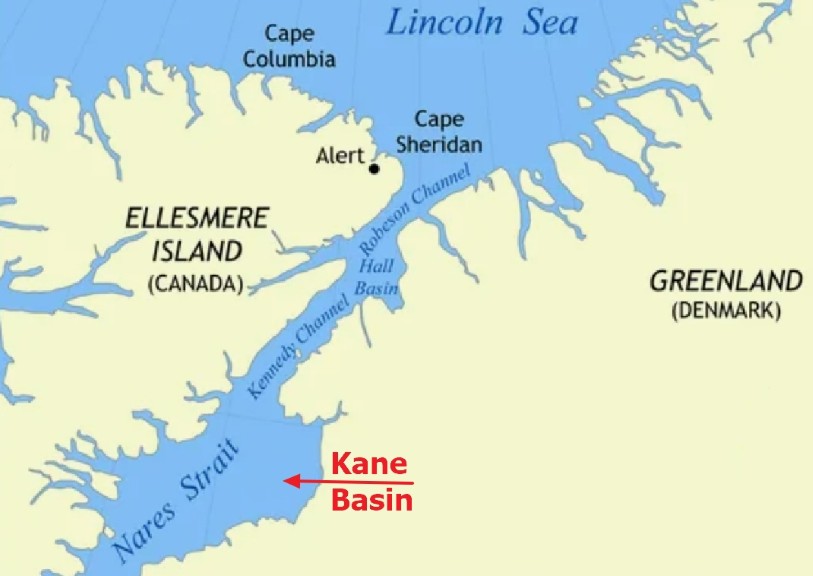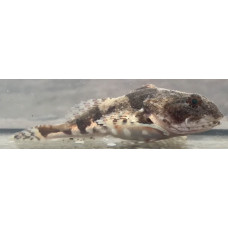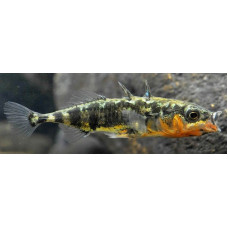Fauna of the Kane Basin
 It is a sea of the Arctic Ocean that separates northwest Greenland and Ellesmere Island, connecting Baffin Bay with the Lincoln Sea. It covers an area of about 24 thousand km². It is 150-300 meters deep and part of the Nares Strait, which is more than 180 kilometers long. At its narrowest point, it is about 40 km wide. Its greatest depth is 384 meters. It was named after American polar explorer Elisha Kent Kane, who explored the area in search of John Franklin in the 1860s. It is covered with ice year-round because it is far north and away from warm currents. Even in the summertime, only icebreakers can navigate it.
It is a sea of the Arctic Ocean that separates northwest Greenland and Ellesmere Island, connecting Baffin Bay with the Lincoln Sea. It covers an area of about 24 thousand km². It is 150-300 meters deep and part of the Nares Strait, which is more than 180 kilometers long. At its narrowest point, it is about 40 km wide. Its greatest depth is 384 meters. It was named after American polar explorer Elisha Kent Kane, who explored the area in search of John Franklin in the 1860s. It is covered with ice year-round because it is far north and away from warm currents. Even in the summertime, only icebreakers can navigate it.
The residents of Kane Basin
The predominant flora in the sea are Fucus, Laminaria, and Zostera. The diatom has adapted to life in this harsh environment. There are few species of phytoplankton in total. Among the benthos are Geodia barretti, Stomphia coccinea, and Gersemia rubiformis. Bowhead whales (Balaena mysticetus) and Greenland sharks (Somniosus microcephalus) inhabit the area. A few fish that can withstand the fierce cold and have adapted to the local environment can be noted, including: Atlantic cod (Gadus morhua), Atlantic mackerel (Scomber scombrus), Pacific cod (Gadus macrocephalus), three-spined stickleback (Gasterosteus aculeatus), Greenland halibut (Reinhardtius hippoglossoides), roughhead grenadier (Macrourus berglax), beaked redfish (Sebastes mentella). Greenland cod (Gadus ogac), polar cod (Boreogadus saida), shorthorn sculpin (Myoxocephalus scorpius), arctic skate (Amblyraja radiata), gelatinous seasnail (Liparis fabricii), American sand lance (Ammodytes americanus), Arctic flounder (Amblyraja hyperborea) and glacier lantern fish (Benthosema glaciale).
Shorthorn sculpin
Latin nameMyoxocephalus scorpiusOther namesBull-rout, father-lasher.IdentificationThe head is broad ..
Three-spined stickleback
Three-spined stickleback (Gasterosteus aculeatus) is a fish of the stickleback family. Length 5-6 cm..


